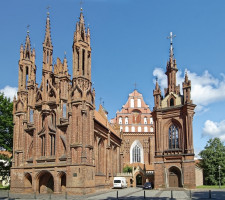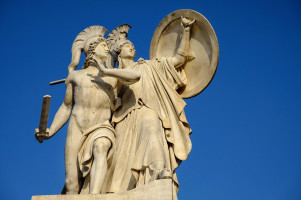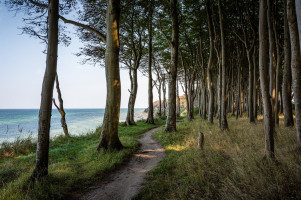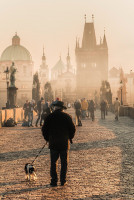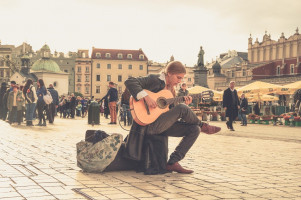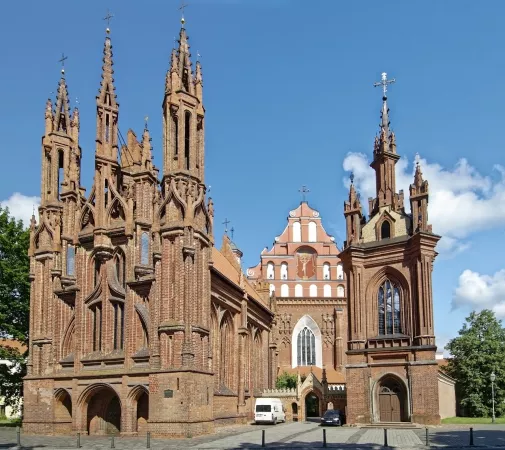
Lithuania
Duration
3 to 7 Days
3 to 7 Days
Best time to visit
Jun-Aug
Jun-Aug
Theme
Heritage
Heritage
Lithuania Travel Guide
Lithuania, located in the Baltic region of Europe, is a country known for its rich history, stunning landscapes, and vibrant culture. With a history dating back to the medieval era, Lithuania boasts charming old towns, impressive castles, and a deep-rooted cultural heritage. The country is famous for being one of the three Baltic states and for its unique blend of Western and Eastern European influences.Top Attractions in Lithuania
- The Hill of Crosses
- Trakai Island Castle
- Curonian Spit National Park
- Vilnius Old Town
- Rumšiškės Open-Air Museum
Lithuania is Famous for
Its enchanting old towns and historical landmarks.Top Attractions in Lithuania
- Exploring the charming streets of Vilnius Old Town
- Admiring the unique wooden architecture in Kaunas
- Relaxing on the sandy beaches of the Curonian Spit
- Immersing in the rich cultural heritage at the National Museum of Lithuania
- Visiting the impressive Trakai Island Castle on Lake Galvė
What's Great about Travelling to Lithuania?
- Rich cultural experiences
- Budget-friendly destination
- Scenic landscapes
- Friendly locals
What's Not So Great about Travelling Lithuania?
- Cold winters
- Limited public transportation options
- Language barrier in some areas
Travel Tips for Lithuania
- Check visa requirements before travel
- Use public transportation or rent a car for easier exploration
- Stay cautious of pickpockets in crowded tourist areas
Important Lithuania trip information
- Ideal Duration: A week to 10 days is ideal for exploring the main attractions.
- Best Time to Visit: Summer months from June to August for pleasant weather.
- Nearby Airports and Railway Stations: Vilnius International Airport and Vilnius Railway Station are major transportation hubs.
Per Person
72,059
*EXCLUDING APPLICABLE TAXES 5.0 Ratings
( 393 Reviews )
( 393 Reviews )
Per Person
1,60,887
*EXCLUDING APPLICABLE TAXES 5.0 Ratings
( 393 Reviews )
( 393 Reviews )
Per Person
1,35,914
*EXCLUDING APPLICABLE TAXES 5.0 Ratings
( 393 Reviews )
( 393 Reviews )
Per Person
91,755
*EXCLUDING APPLICABLE TAXES 5.0 Ratings
( 393 Reviews )
( 393 Reviews )
Per Person
1,25,864
*EXCLUDING APPLICABLE TAXES 5.0 Ratings
( 393 Reviews )
( 393 Reviews )
Per Person
1,08,570
*EXCLUDING APPLICABLE TAXES 5.0 Ratings
( 393 Reviews )
( 393 Reviews )
FAQ's on Lithuania
Q1: What is the best time to visit Lithuania?
The best time to visit Lithuania is during the summer months from June to August when the weather is mild and pleasant for exploring the country. This is also when various festivals and events take place, offering a vibrant cultural experience. Spring and autumn are also good times to visit for fewer crowds and beautiful changing landscapes. Winter can be cold but offers a unique charm with snowy landscapes and winter activities.
Q2: Do I need a visa to travel to Lithuania?
Most tourists from EU countries and several other nations do not need a visa to enter Lithuania for short stays. However, it is essential to check the specific visa requirements based on your nationality before traveling. Make sure your passport is valid for at least six months beyond your intended stay.
Q3: What are the must-visit attractions in Lithuania?
Lithuania boasts a rich cultural heritage and stunning natural landscapes. Must-visit attractions include Vilnius Old Town, Trakai Island Castle, Hill of Crosses, Curonian Spit, and the historic city of Kaunas. Explore the unique architecture, charming cobblestone streets, and picturesque countryside that make Lithuania a hidden gem in Europe.
Q4: Is Lithuania a safe place to travel?
Lithuania is generally a safe country for travelers. However, like any other destination, it is advisable to take standard precautions such as avoiding poorly lit areas at night and being cautious of pickpockets in crowded places. Stay informed about your surroundings and follow local laws and customs to ensure a safe and enjoyable trip.
Q5: What is the local currency in Lithuania and can I use credit cards?
The local currency in Lithuania is the Euro (EUR). Credit cards are widely accepted in major establishments, but it is recommended to carry some cash for smaller vendors and public transportation. ATMs are readily available in cities and towns for easy access to cash.
Q6: What is the local cuisine like in Lithuania?
Lithuanian cuisine is hearty and flavorful, with dishes like Cepelinai (potato dumplings), Saltibarsciai (cold beet soup), and Kugelis (potato pudding) being popular choices. The food is often influenced by seasonal ingredients and traditional cooking methods, offering a unique culinary experience for visitors. Vegetarians and vegans may find options available but should communicate dietary preferences clearly.
Q7: What transportation options are available in Lithuania?
Lithuania has a well-connected transportation system that includes buses, trains, and domestic flights for traveling between cities. Public transport in major cities like Vilnius and Kaunas is efficient and affordable. Taxis are also available but may be more costly. Car rentals are a convenient option for exploring the countryside and remote areas.
Q8: Are there any cultural norms or etiquette I should be aware of when visiting Lithuania?
When visiting Lithuania, it is important to greet people with a handshake and maintain eye contact during conversations. Respect for elders is highly valued, and it is customary to remove shoes when entering someone's home. Tipping is appreciated in restaurants and for services like taxis. Understanding and respecting the country's history and traditions will enhance your experience in Lithuania.
Q9: I am a travel agent. How can I buy travel leads of Lithuania?
Register yourself as a travel agent at agents.tripclap.com and then you can buy travel leads to Lithuania once your account is approved. For more details contact our support team at +91-8069186564 or support@tripclap.com
